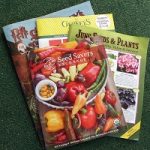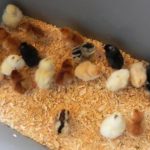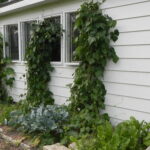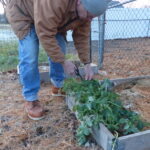Winter Readiness
Recently Rich donned a heavy jacket, gloves, and hat then ventured through swirling snow to the mailbox. He returned with seed catalogs. Seems early but there are two good reasons why we like to receive them in the depth of winter.

Seed catalogs make great winter reading.
First, they make fun reading as we sit in the cheery glow of the woodstove. It’s pleasant to see photos of colorful vegetables. Makes us long for spring.
Second, they remind us it’s time to buy our seeds. Gardening was amazingly popular last year as Coronavirus confined millions of people to their homes and potential food shortages were a concern. So many people bought seeds that they were hard to find. The lesson: Buy early.
We manage our small garden intensively and mix composted chicken manure into the soil. It makes vegetables seemingly explode in growth.
Here’s how we buy seeds:
Mail Order: Our favorite mail-order seed source is Seed Savers Exchange (seedsavers.org) in Decorah, Iowa. They specialize in organic, non-hybrid, non-GMO seeds. In other words, they sell classic vegetable varieties. We eat many winter squash, and Seed Savers sells a wide diversity of varieties. Our favorite is Silver Bell. It’s full of flavor, keeps all winter, and is just the right size for two people. We have ordered seeds from large format catalogs that come to our mailbox unrequested. They’ve been good seeds, but they tend to have fewer varieties of winter squash and some other vegetables. Most also sell flower seeds and fruit trees.
Over the Counter: Right after January 1st, home and garden stores put out their garden seeds. We often buy a dozen or so of the small envelopes of seeds.
Generally, they sell seeds packed by two types of companies. One is name brand seeds. The other is packets sold by companies with names we don’t always recognize. They are much less expensive than name brands. We usually buy some of each type and have had good success with the less expensive ones.
A Planting Tip
Lettuce, carrots, parsnips, radish, and many other seeds are tiny. It’s easy to plant them too close together. That results in tedious thinning in a month or two. We take the time to plant the seeds further apart to reduce the thinning chore. This also stretches the seeds in the envelope to produce more food. Often, we replant early vegetables and get a second, late-season crop.
- Use chicken manure to enrich the soil.
- Save space and cool the cabin.
- Intensive gardening maximizes space
Baby Chicks May Also Be in Short Supply
Last year hatcheries had trouble meeting the demand for baby chicks. Some customers were disappointed that they weren’t able to buy the breeds they wanted. We place our order at Hoover’s Hatcher (hoovershatchery.com) in the winter so we get the chicks we want at the best time for us.

Chicks need to be warm until their insulating feather grow.
Seeds or baby chicks……order early.




